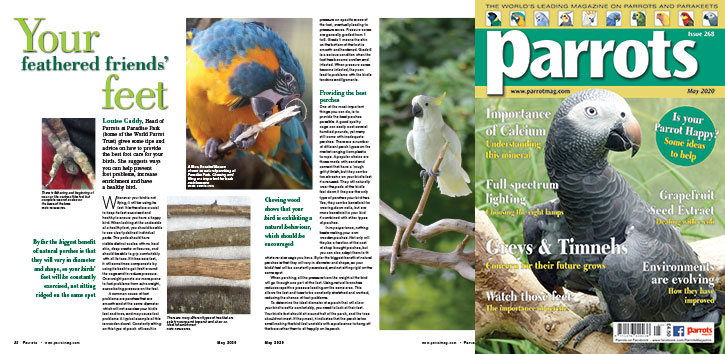
Louise Caddy, Head of Parrots at Paradise Park (home of the World Parrot Trust)
Whenever your bird is not flying, it will be using its feet. It is therefore crucial to keep its feet exercised and healthy to ensure you have a happy bird. When looking at the underside of a healthy foot, you should be able to see clearly defined individual pads. The pads should have visible distinct scales with no hard skin, deep cracks or fissures, and should be able to grip comfortably with all its toes. If it has sore feet, it will sometimes compensate by using its beak to get itself around the cage and to reduce pressure. Overweight parrots are more prone to foot problems from extra weight, exacerbating pressure on the feet.
A common cause of foot problems are perches that are smooth and of the same diameter which will not exercise your bird’s feet and toes, and may cause foot problems. A typical example of this is wooden dowel. Constantly sitting on this type of perch will result in pressure on specific areas of the foot, eventually leading to pressure sores. Pressure sores are generally graded from 1 to 5. Grade 1 means the skin on the bottom of the foot is smooth and hardened. Grade 5 is a serious condition when the foot has become swollen and infected. When pressure sores become infected, they can lead to problems with the bird’s tendons and ligaments.
